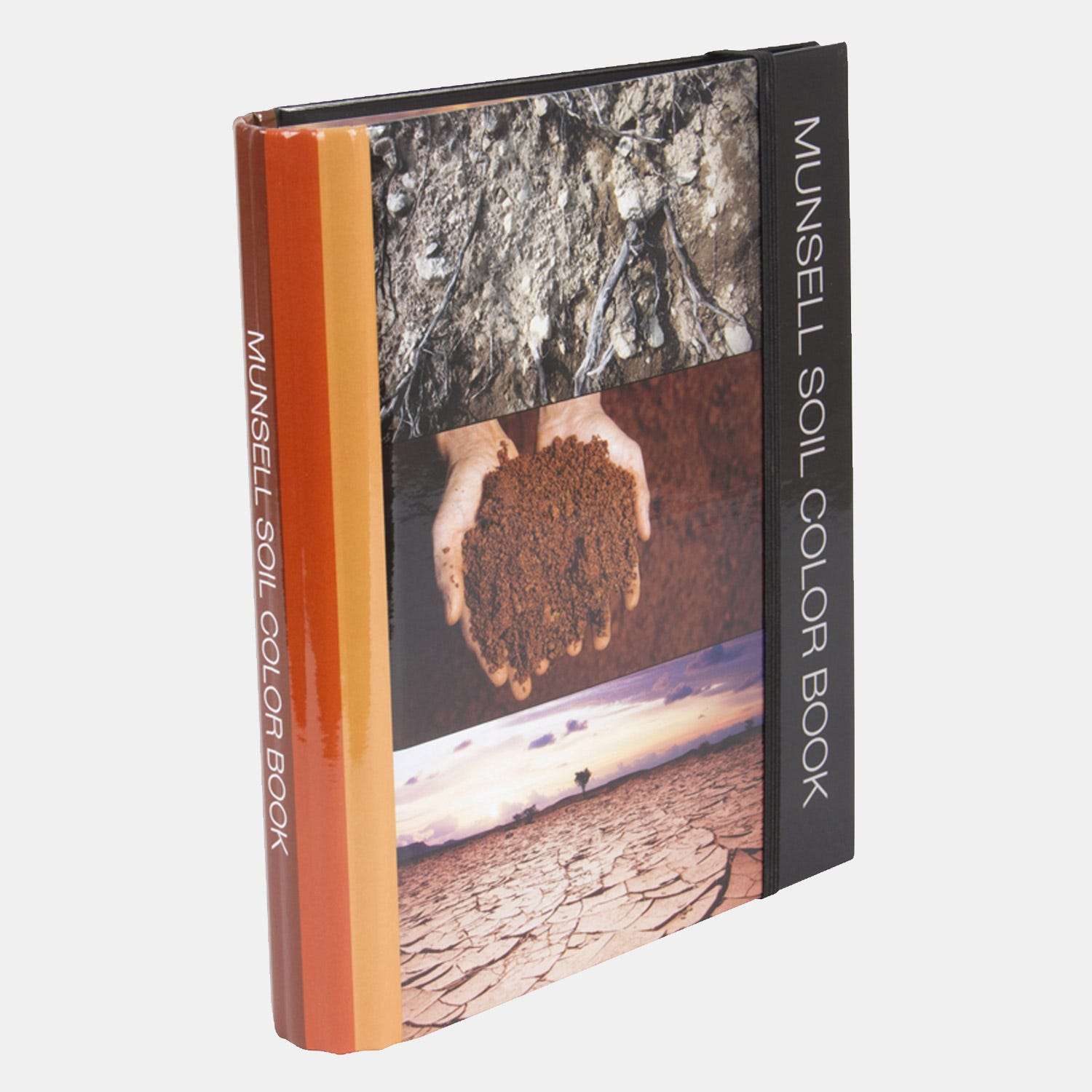No products in the cart.
Return To ShopThe Munsell Soil Color Book stands as a cornerstone tool in soil science and related fields, offering a standardized system for soil color classification that has maintained its position as the industry standard for over six decades. This essential resource facilitates precise soil identification and enables consistent communication about soil properties across global scientific communities.
Munsell History and Development
The Munsell Soil Color system was developed based on Albert H. Munsell’s color theory, which organizes colors according to three dimensions: hue (basic color), value (lightness), and chroma (color intensity). When applied to soil science, this system allows for exact documentation of soil color attributes, which serve as crucial indicators of soil composition, organic matter content, drainage conditions, and mineral presence.
Munsell Comprehensive Content and Organization
The Munsell Soil Color Book contains a carefully curated collection of standardized color charts that cover the full spectrum of soil colors found worldwide. Each page is systematically organized to facilitate quick and accurate field assessments. The book includes:
Hue Charts: Multiple charts representing different color families, including:
10R, 2.5YR, 5YR, 7.5YR, 10YR (yellower reds to yellow-browns)
2.5Y, 5Y (yellows to olive yellows)
10Y-5GY (specialized olive greens for glauconitic soils)
5R (specifically for Australian and Southeast Asian soils)
7.5R (designed for tropical and semi-tropical soils)
Gray charts (two separate specialized charts for gray soils)
New white page with 7.5R, 10YR, and 2.5Y
Practical Applications
The Munsell Soil Color Book serves numerous professional fields beyond soil science:
Environmental Sciences
Environmental professionals use color classification to identify soil contamination, monitor remediation progress, and assess soil health in ecosystems. Color changes can indicate pollution presence or environmental stress.
Agriculture and Forestry
Farmers and forestry experts rely on soil color to determine soil fertility, drainage capacity, and organic matter content. These insights guide crop selection, forest management, and sustainable land use practices.
Archaeology
Archaeologists use soil color to identify cultural layers, detect features like hearths or storage pits, and understand site formation processes. Color variations often indicate human activity areas within archaeological sites.
Geology and Pedology
Geologists and soil scientists interpret soil colors to understand soil genesis, weathering processes, and horizon development. Colors reveal mineral composition and environmental conditions during soil formation.
Forensic Science
Forensic investigators use soil color matching to connect suspects to crime scenes or track movement patterns. The book’s standardized system provides legally defensible evidence.
Construction and Engineering
Engineers assess soil characteristics for foundation work, road construction, and drainage planning based on color indicators of soil stability and composition.
Education
Universities and high schools utilize the Munsell system to teach fundamental soil science concepts through visual, hands-on learning experiences.
Benefits of Standardization
The primary advantage of the Munsell Soil Color Book lies in its universal standardization, which delivers multiple benefits:
Global Consistency: Scientists in different countries can share precise color information without ambiguity or subjective descriptions.
Historical Comparison: Modern soil assessments can be accurately compared with historical records using the same standardized system.
Efficiency: Field assessments can be conducted rapidly without specialized equipment beyond the color book itself.
Precision: The system eliminates subjective color terminology by providing exact numerical values for each color attribute.
Predictive Value: Color identification helps predict soil behavior under different management conditions.
Physical Specifications
The Munsell Soil Color Book is designed for field practicality:
Durable binder dimensions: 6″ × 7.75″ × 1″
Convenient page size: 4⅜” × 7¼”
Field-appropriate weight: 3 lbs (1.3 kg)
Portable design for easy transport to research sites
The comprehensive yet compact nature of the Munsell Soil Color Book makes it an indispensable tool for anyone working with soils, offering a perfect balance between scientific precision and practical usability in diverse field conditions worldwide.
| Weight | 1.5 kg |
|---|---|
| Dimensions | 10 × 10 × 2 cm |
Only logged in customers who have purchased this product may leave a review.
Munsell Soil Color Book M50215B
$300.00 Original price was: $300.00.$295.00Current price is: $295.00.
🔥 8 items sold in last 4 days
Munsell Soil Color Charts are a quick and affordable way to assess soil types in any given area. The color charts in this book are portable and organized to allow for easy and accurate evaluations in the field.
SKU: M50215B
Category: Munsell
Related products
Munsell Book of Color, Ma...
SKU: M40291B🔥 12 items sold in last 4 days
Munsell Color Book Glossy...
SKU: M40115B🔥 4 items sold in last 4 days
Farnsworth Munsell 100 Hu...
SKU: CEP001🔥 4 items sold in last 4 days
Munsell Book of Color, Matte E...
$1,525.00 Original price was: $1,525.00.$1,459.00Current price is: $1,459.00.


Munsell Color Book Glossy Edit...
$1,640.00 Original price was: $1,640.00.$1,305.00Current price is: $1,305.00.













Reviews
There are no reviews yet.